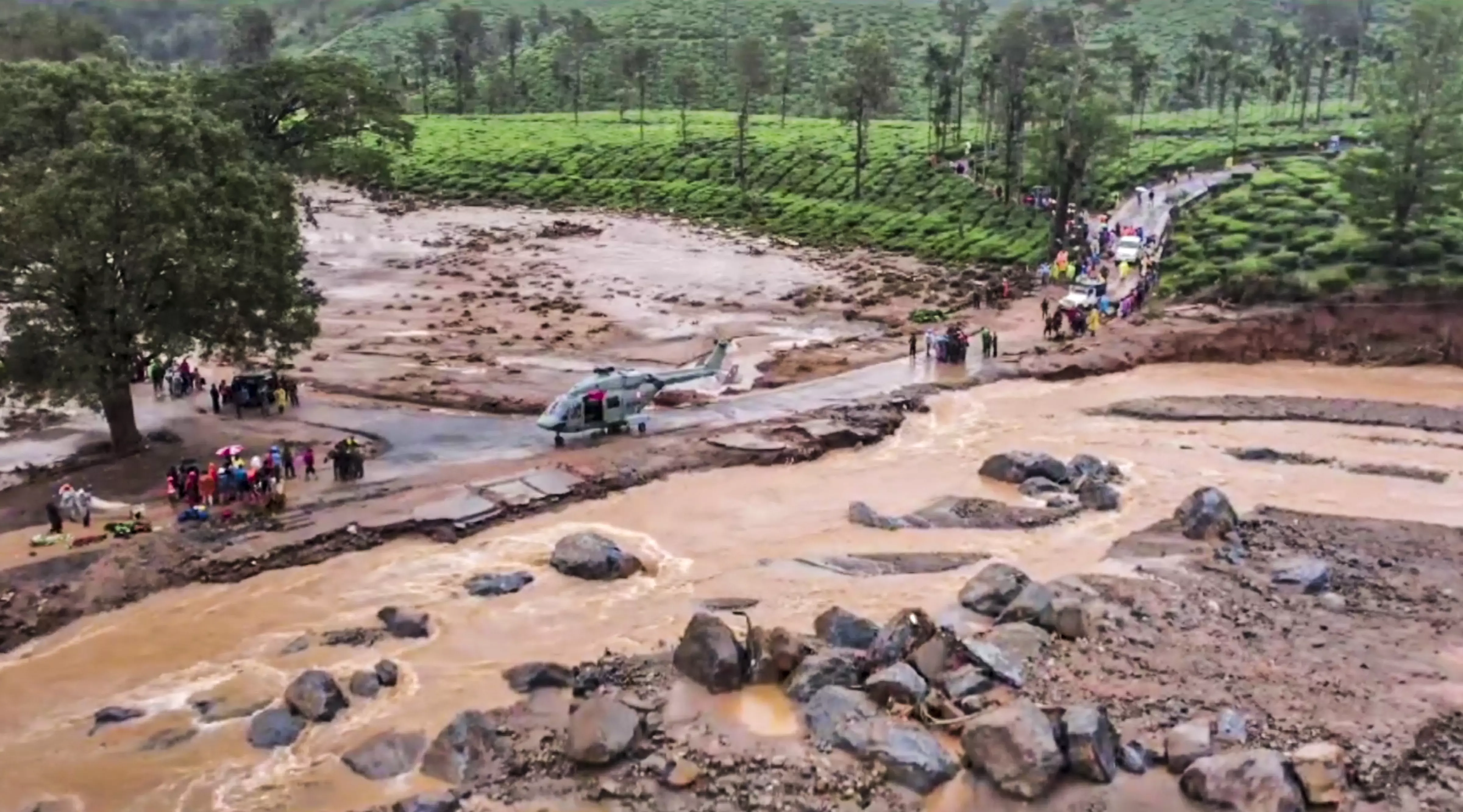
GSI says its forecast bulletins for Wayanad were experimental
This process was a "part of building a prediction model" which an official said will take 4-5 years to be ready for public use, a GSI official said

Amid reports that its warning system failed in landslide-ravaged Wayanad in Kerala, the Geological Survey of India (GSI) on Friday said its regional forecast bulletins for the district were experimental.
"GSI has started issuing regional landslide forecast bulletins on an experimental mode once a day for Wayanad… These are issued only to the State Disaster Management Authority (SDMA) and District Disaster Management Authority (DDMA) for ground testing since the onset of the 2024 monsoon,” a GSI spokesman told PTI.
Bulletins only for feedback
It said the bulletins were restricted only to the two bodies for receiving feedback.
This process was a "part of building a prediction model" which one official said will take four-five years to be ready for public use.
These forecasts are based on rainfall predictions provided by the National Centre for Medium-Range Weather Forecasting (NCMRWF) and the India Meteorological Department (IMD) to prepare landslide thresholds, the official said.
Wayanad’s death, destruction
Massive landslides triggered by torrential rains devastated Wayanad district on July 30, killing some 200 people and causing widespread destruction. Another 300 people are missing.
"The experimental landslide forecast provided for Wayanad was only for validation and ground testing purposes and is not for public use," he said.
Between July 26 and July 30, GSI issued bulletins on all days except July 28, when the system for the experimental forecast was down.
What GSI forecasts said
The GSI landslide forecasts were "low" on all days for Wayanad except for a "moderate" prediction on July 26 for Vythiri Taluk and on July 30 for Vythiri and Mananthavady Taluk, the surveyor said.
The GSI emphasised that extensive ground testing over four to five monsoon years is required before the model can be made available for public use.
"It may be noted that the probable source areas of the debris flow fall within the high and moderate susceptibility zones delineated by GSI," the official said.
The Kolkata-headquartered GSI has operationalised a landslide forecasting system in Darjeeling and Kalimpong districts of West Bengal and the Nilgiris in Tamil Nadu for public use after ground testing since 2020.
The ground testing activities by GSI for at least 13 more districts are in progress.
(With agency inputs)
